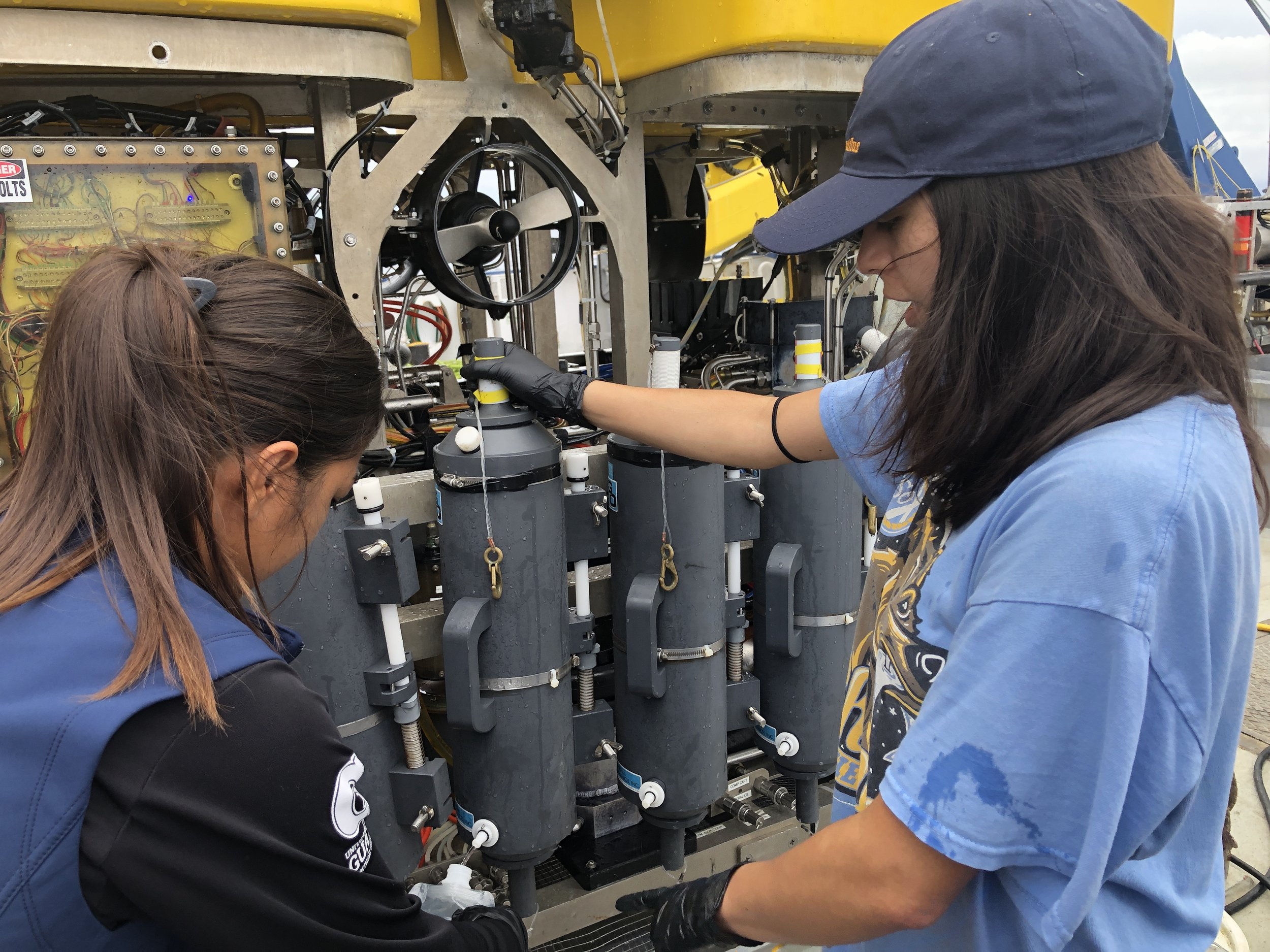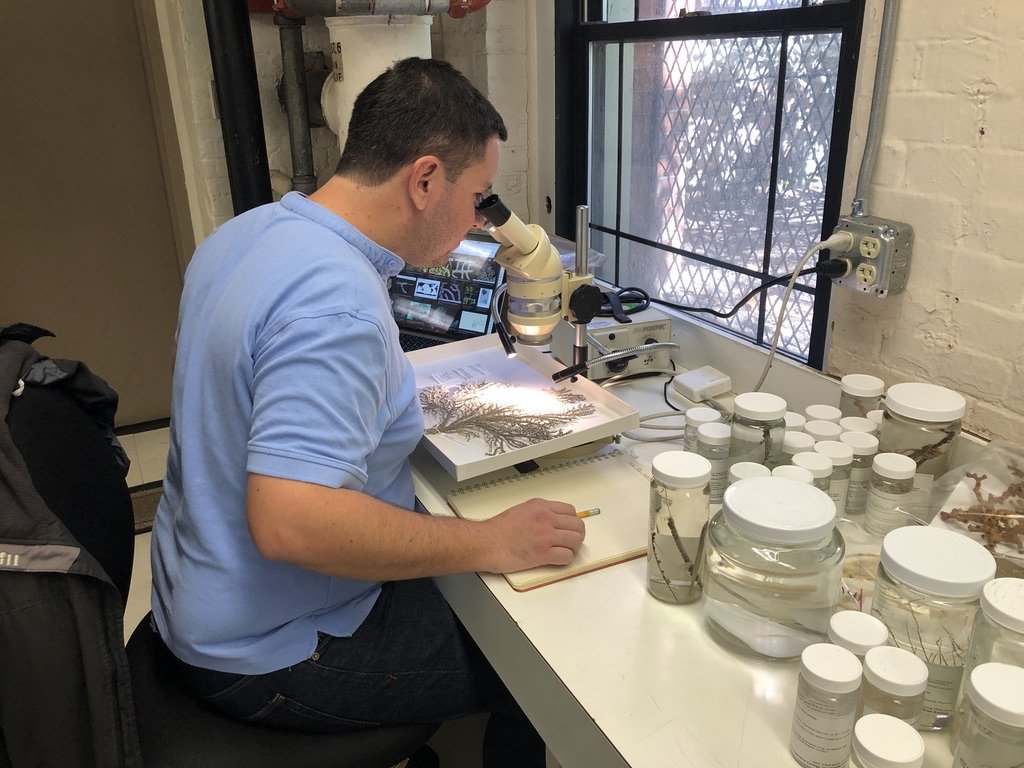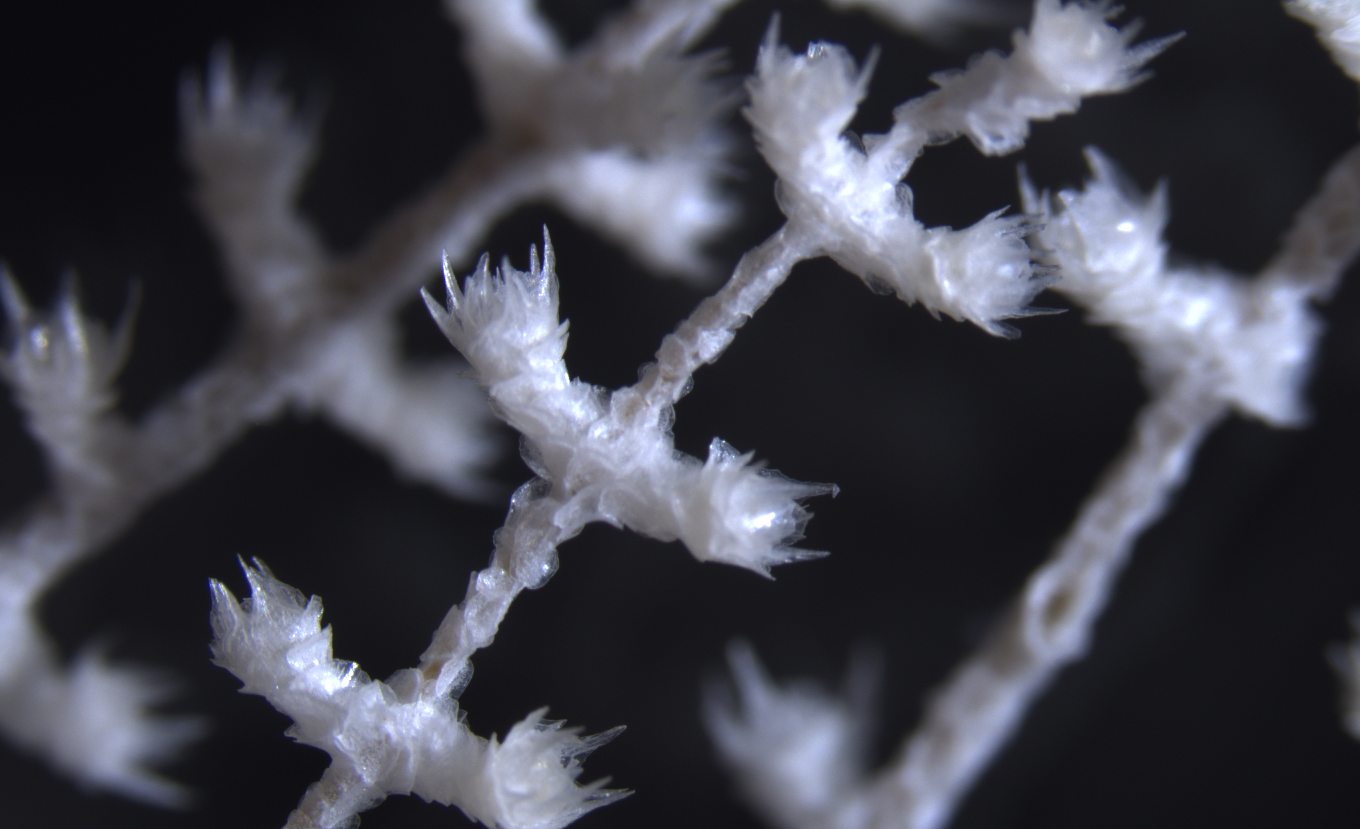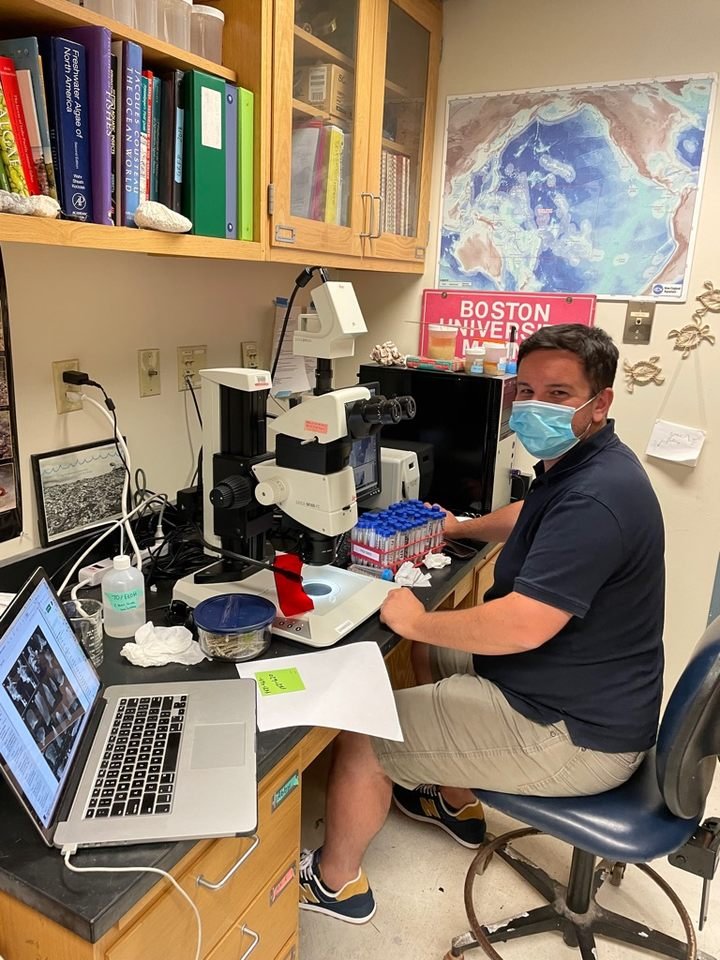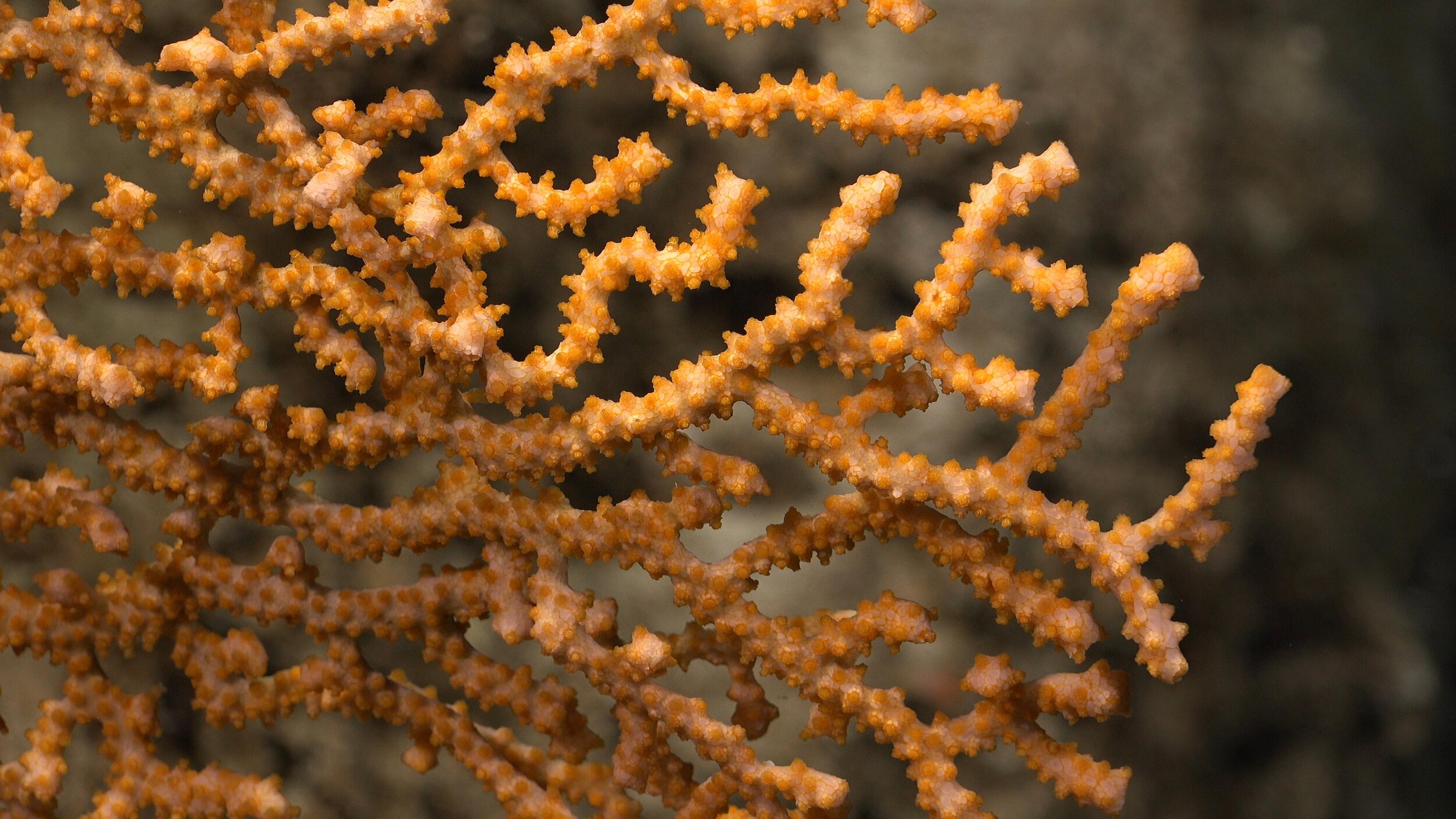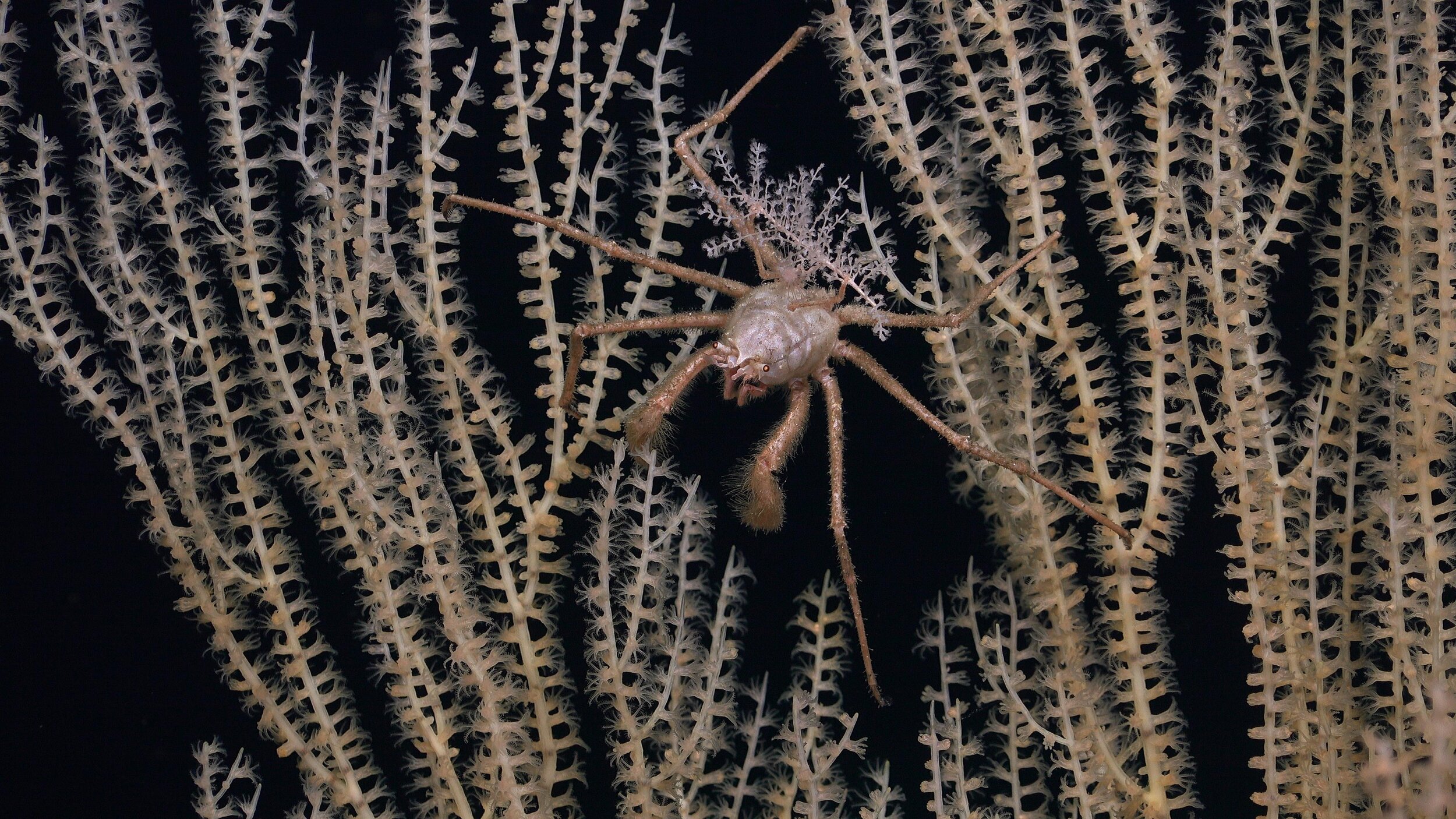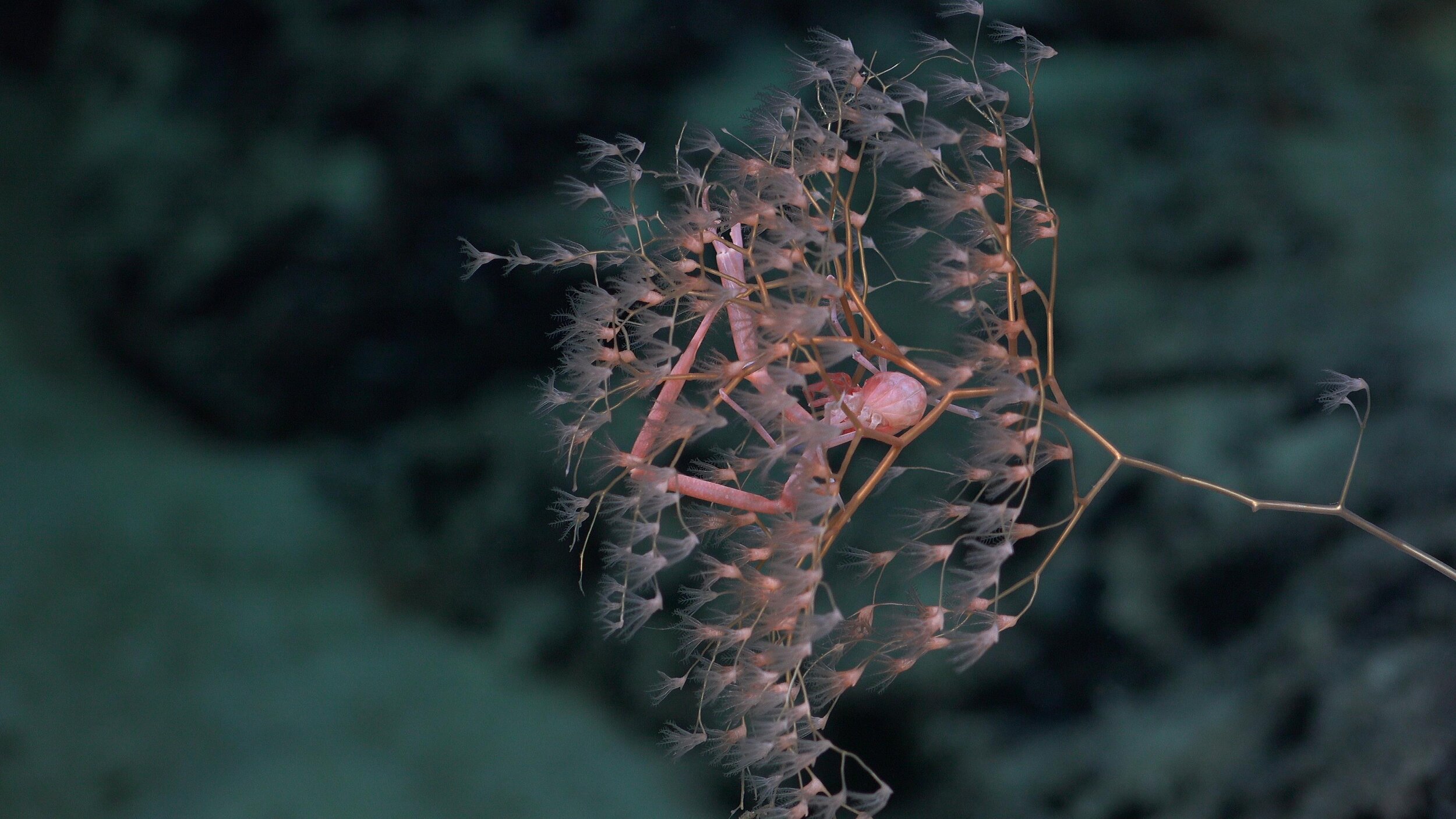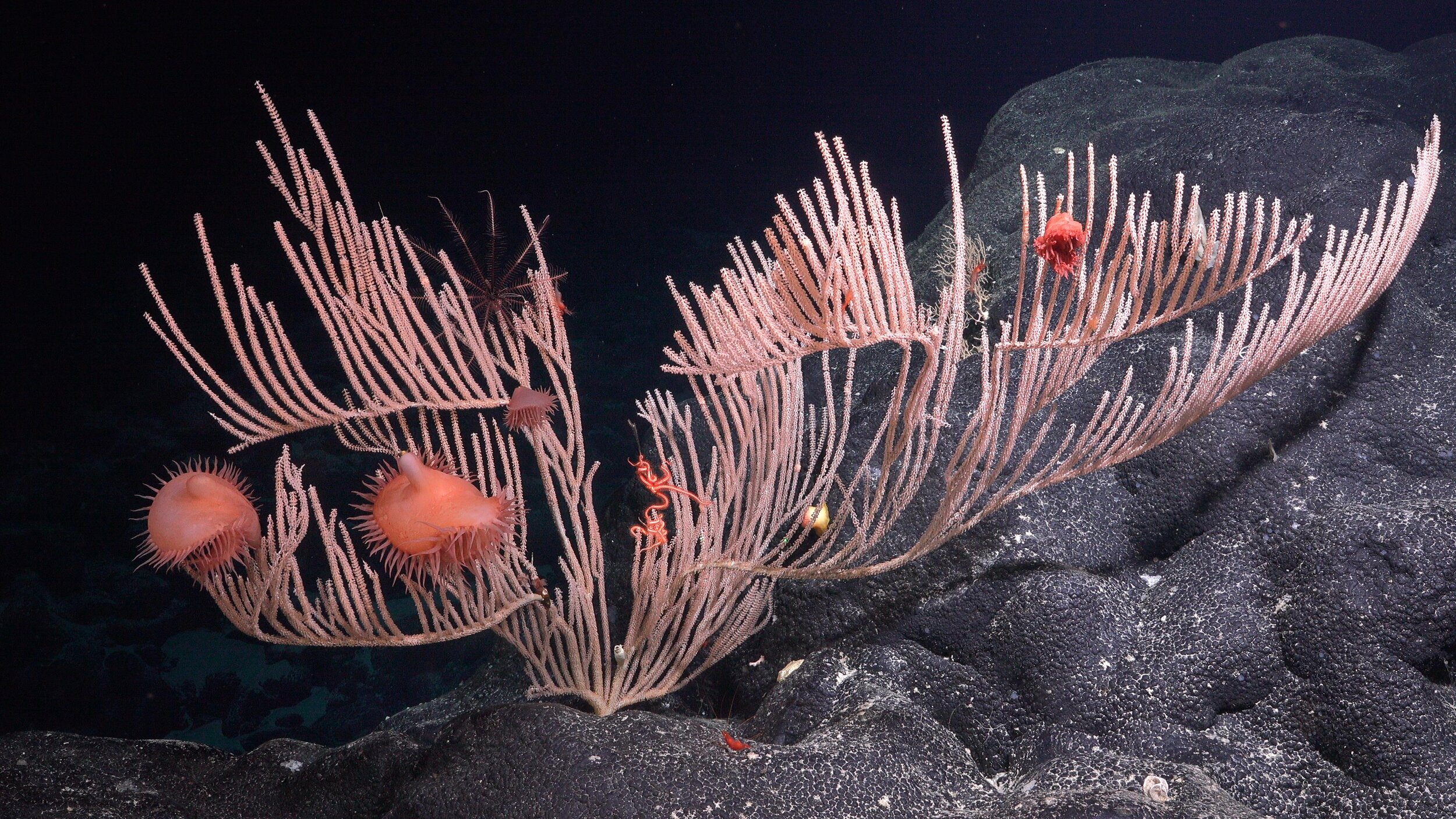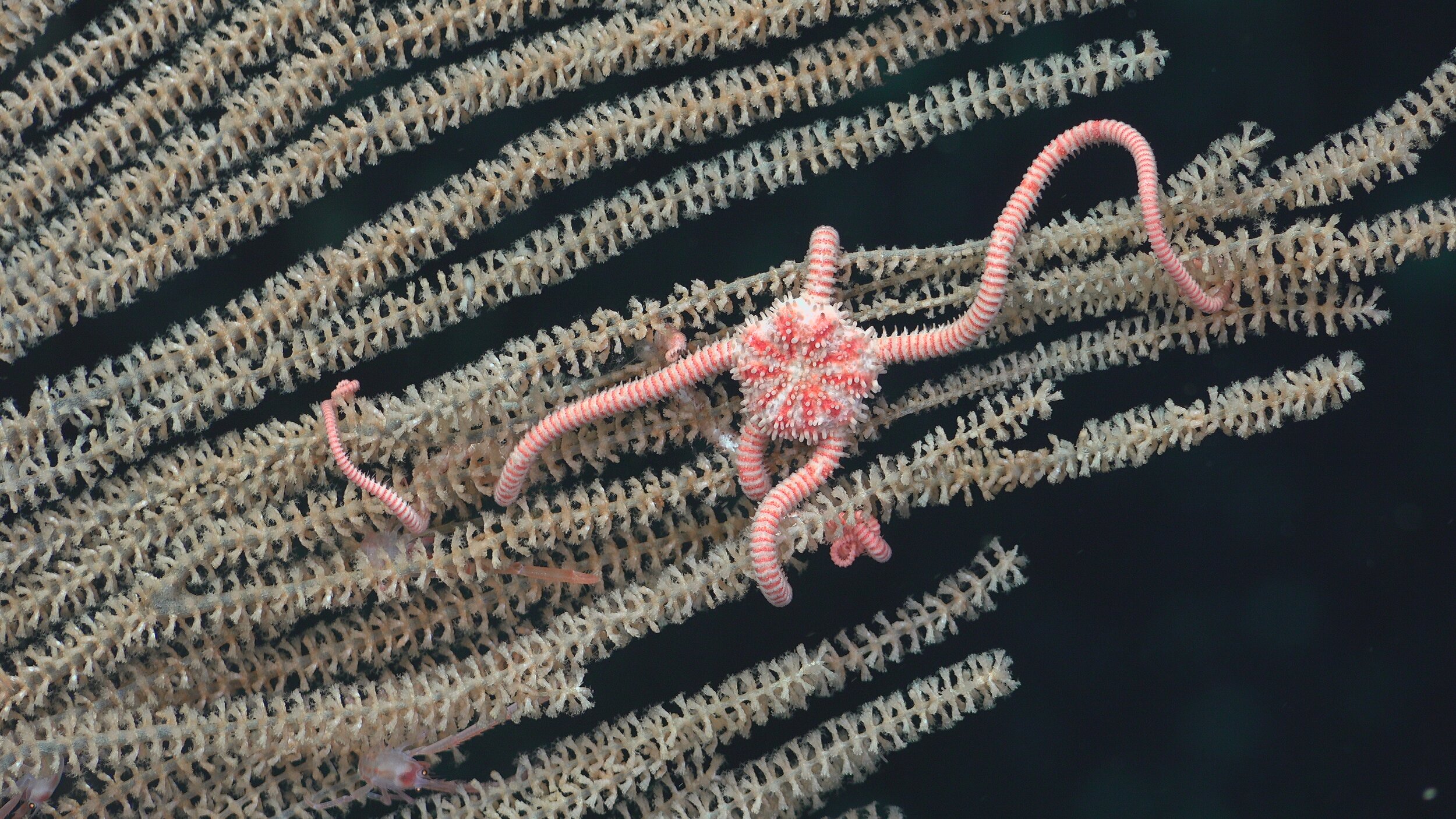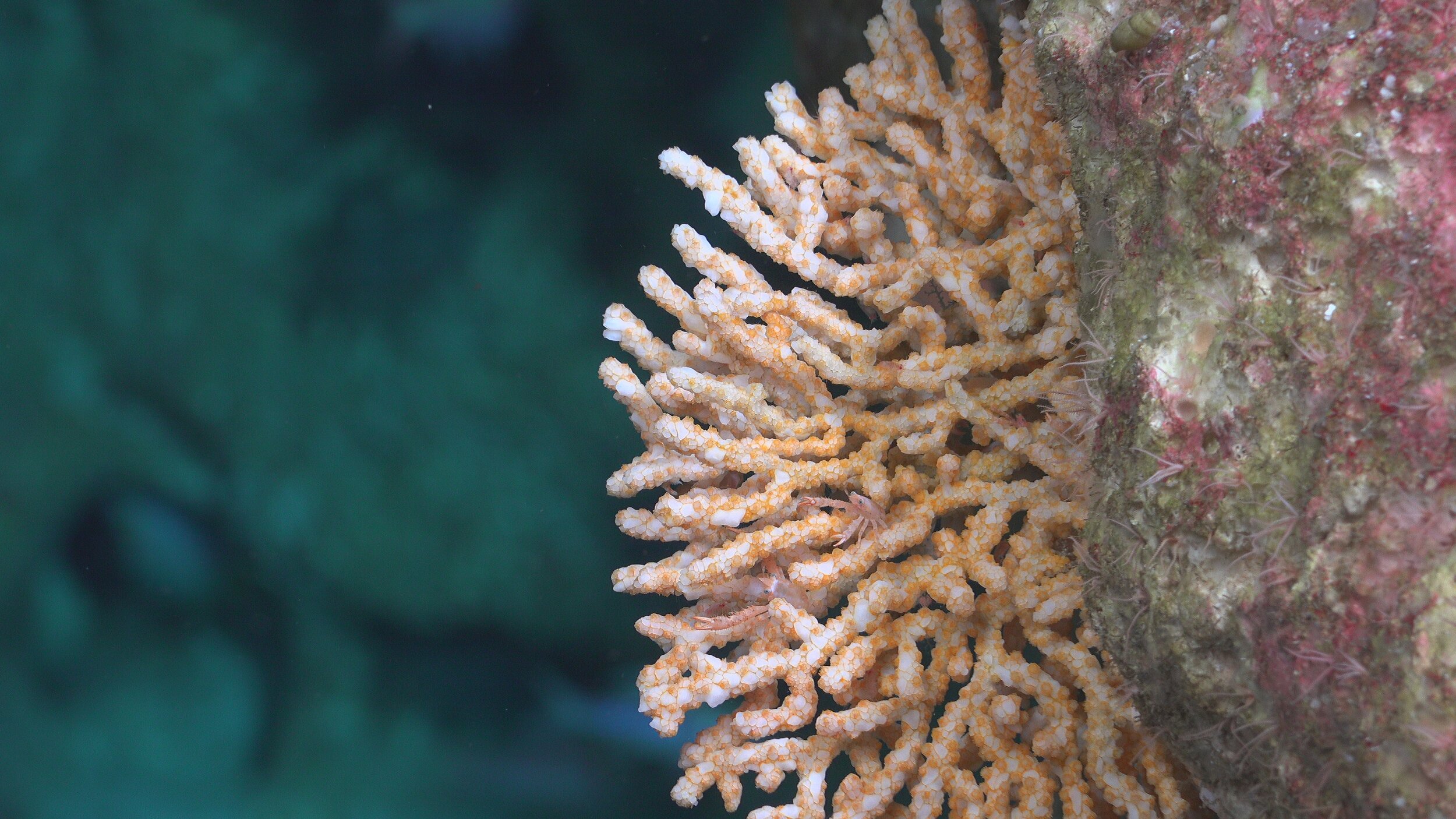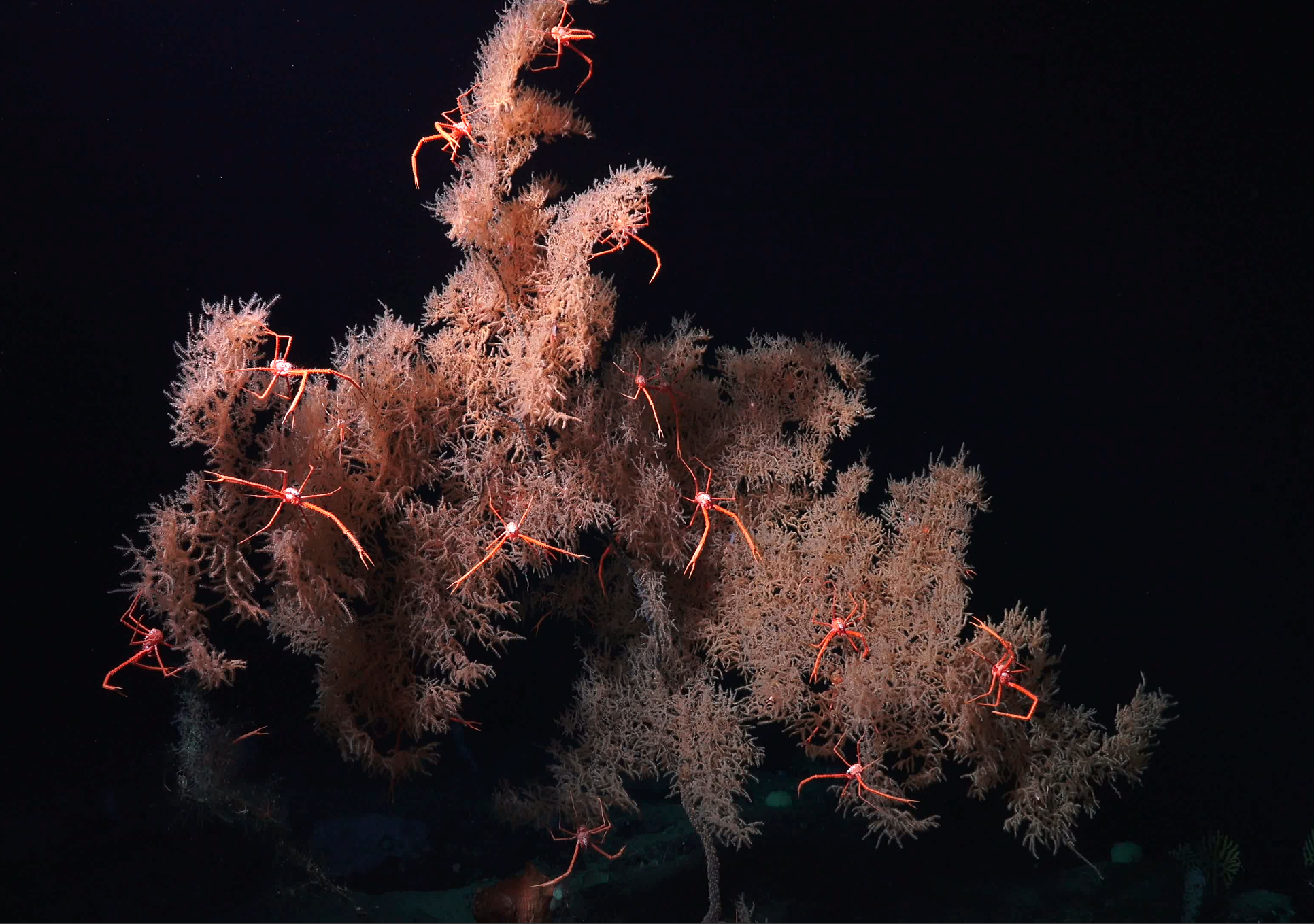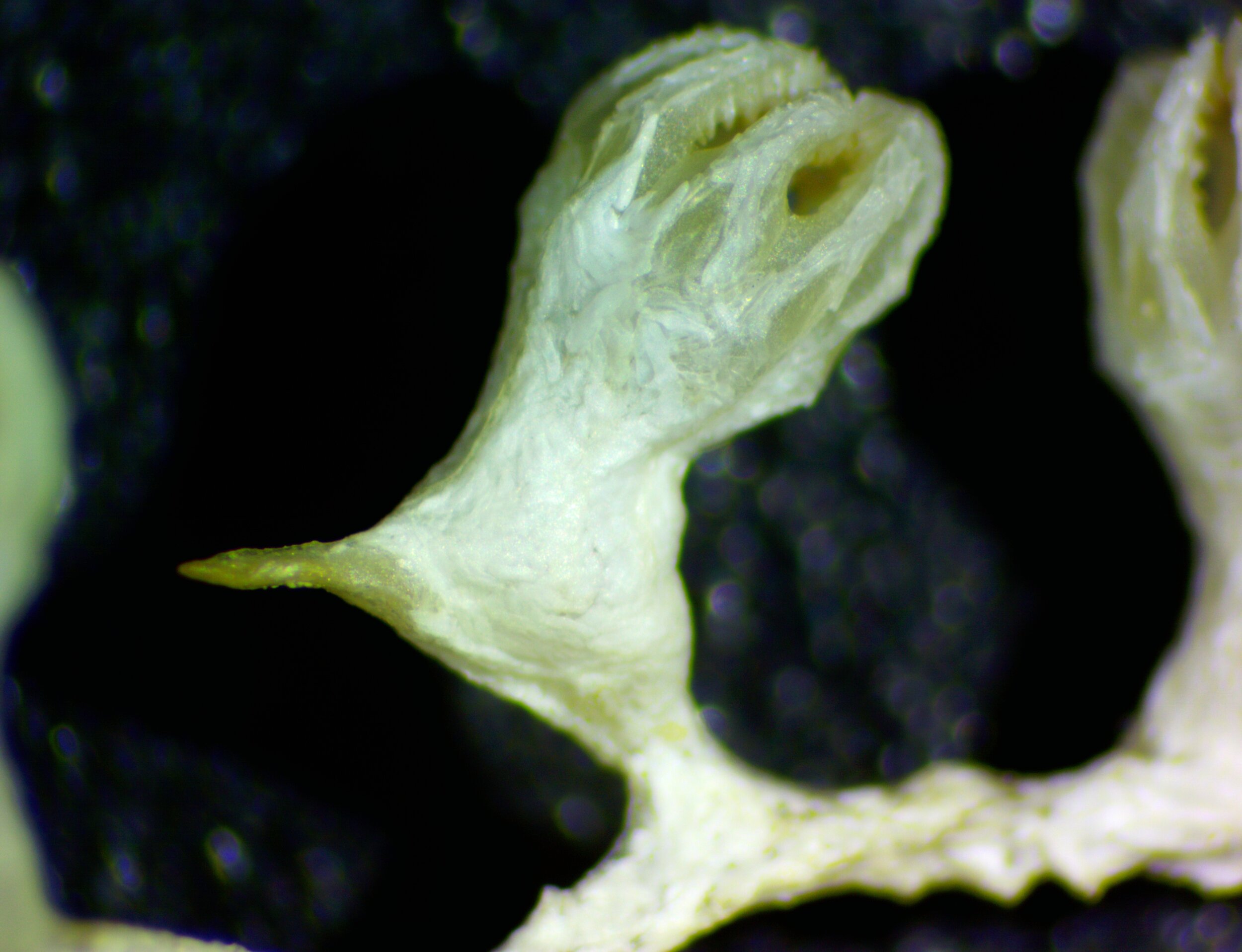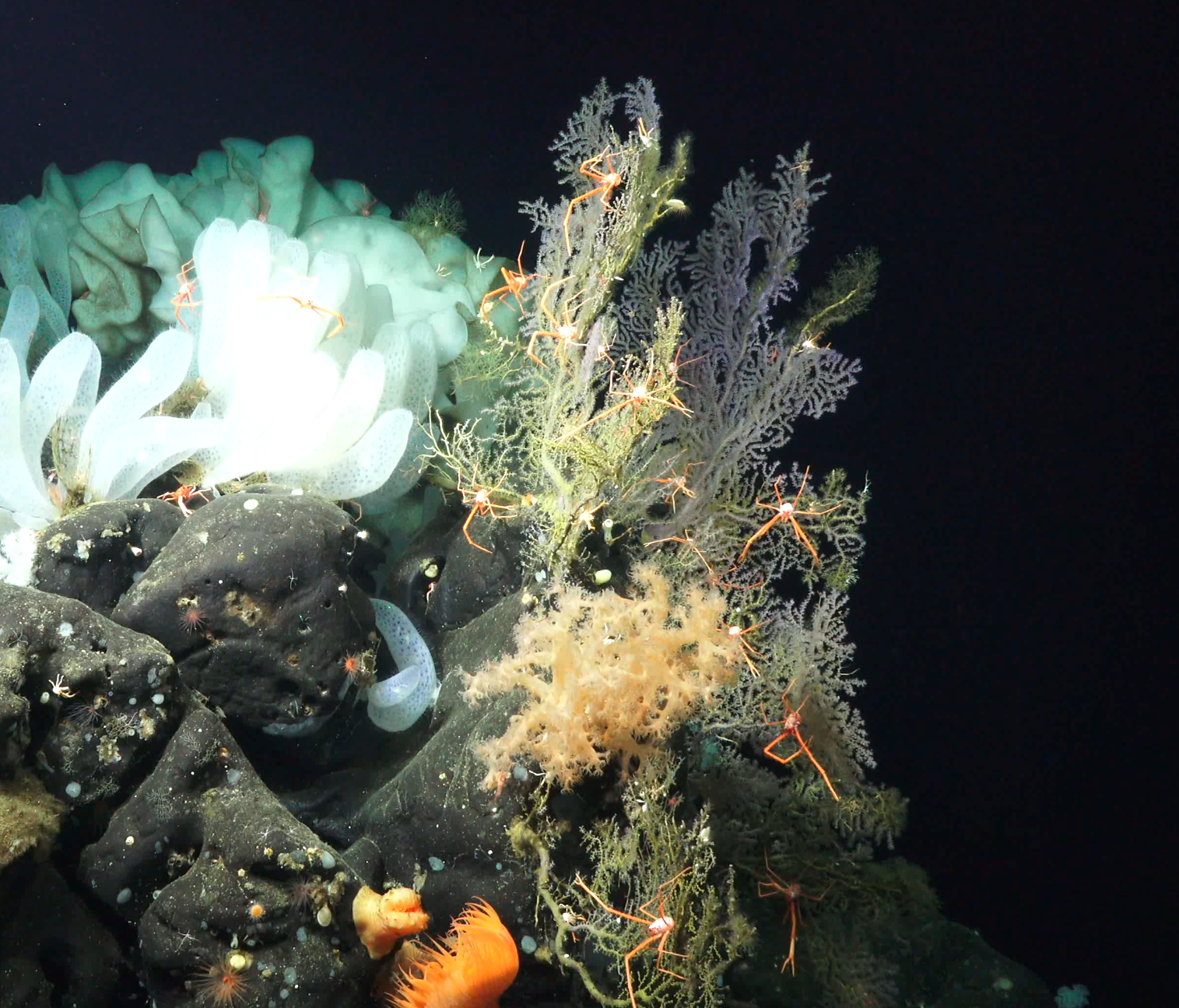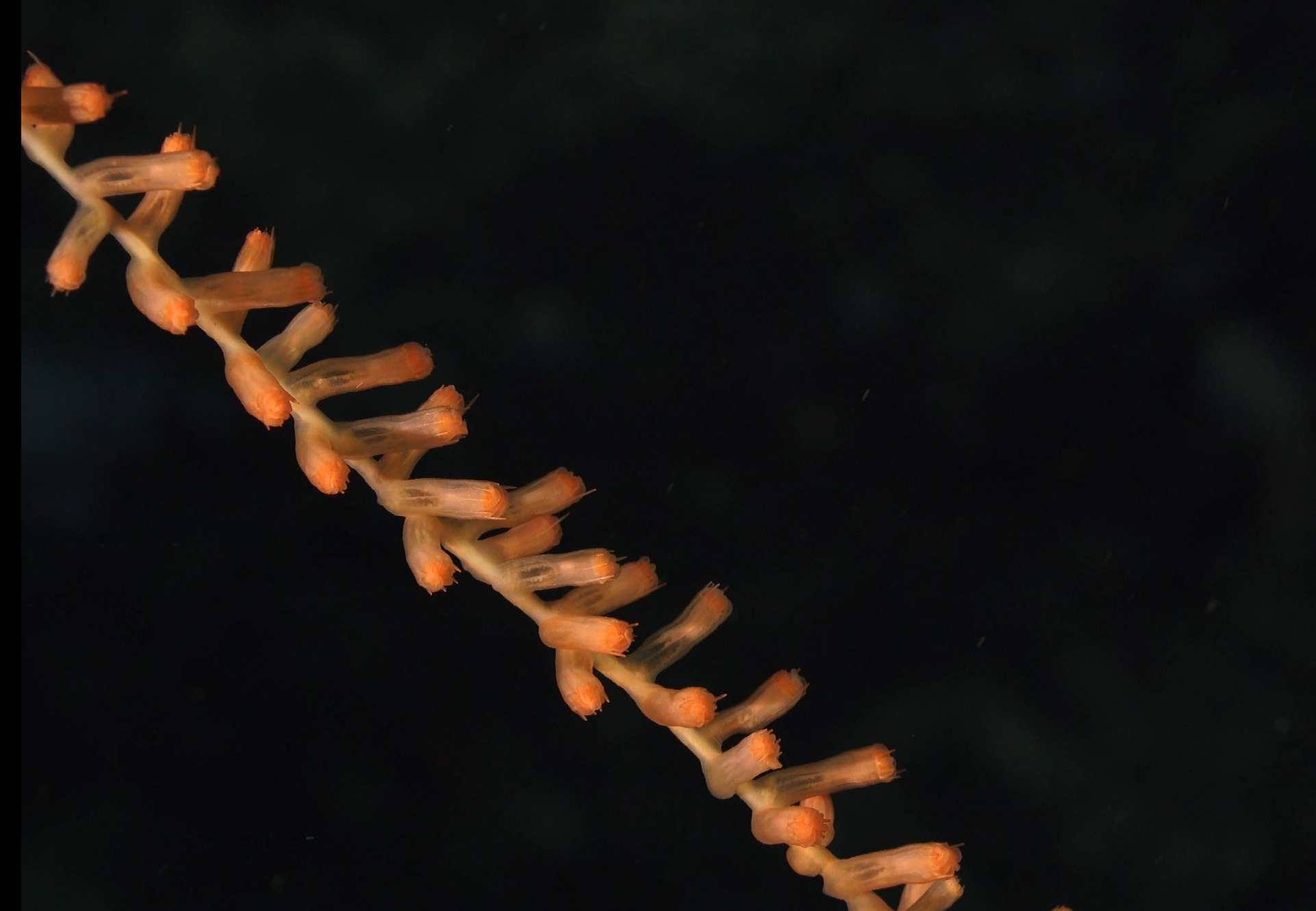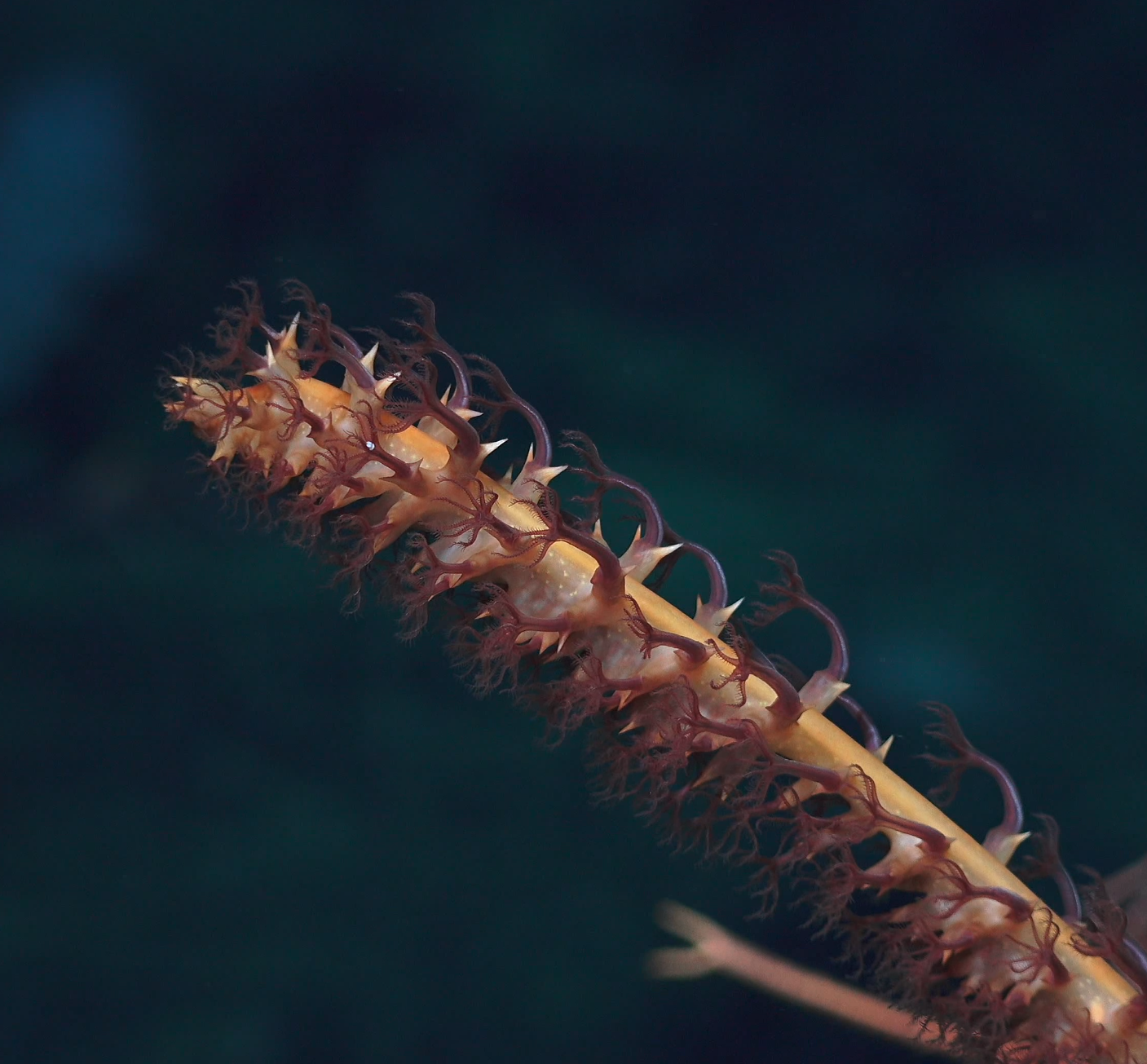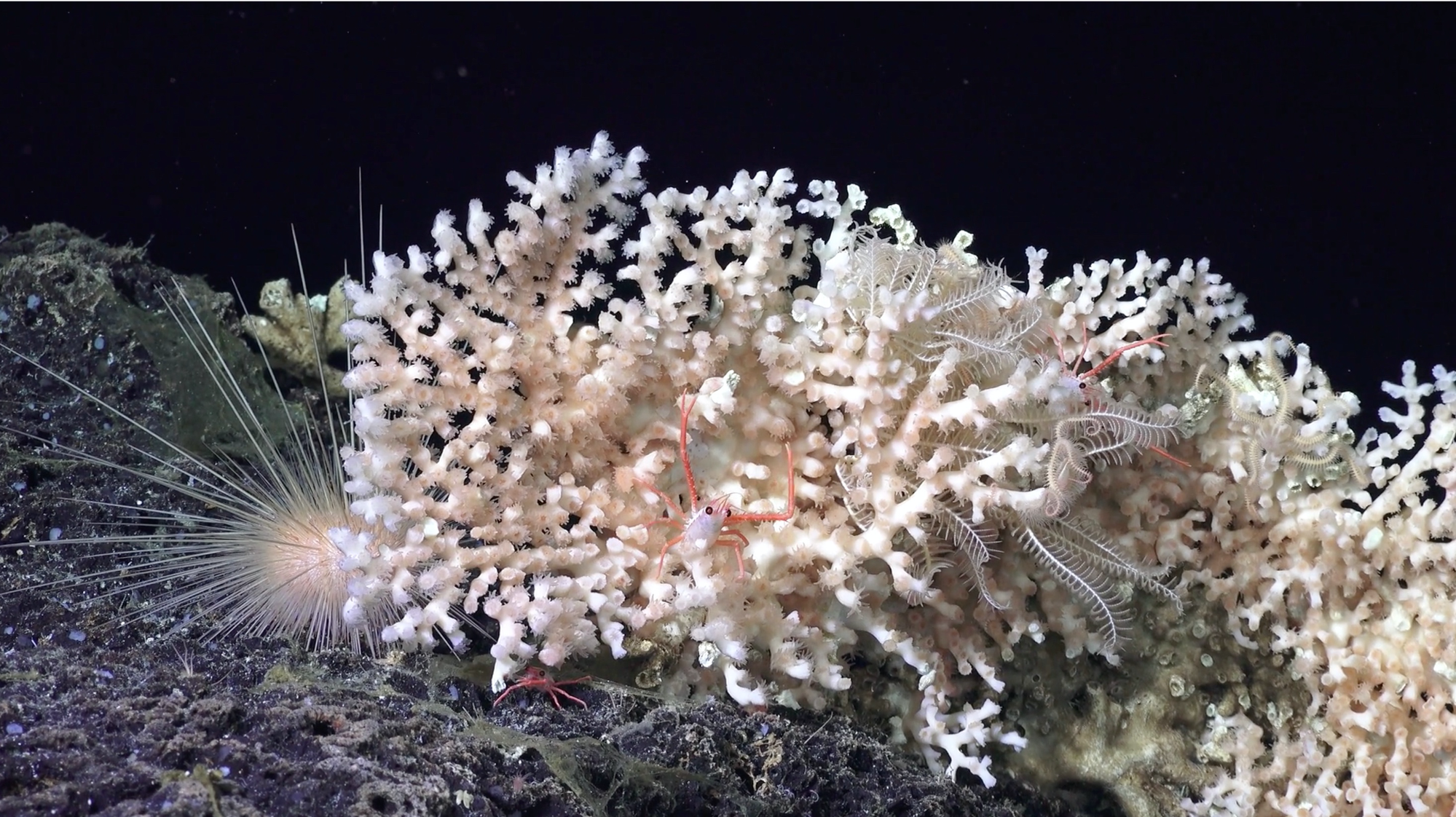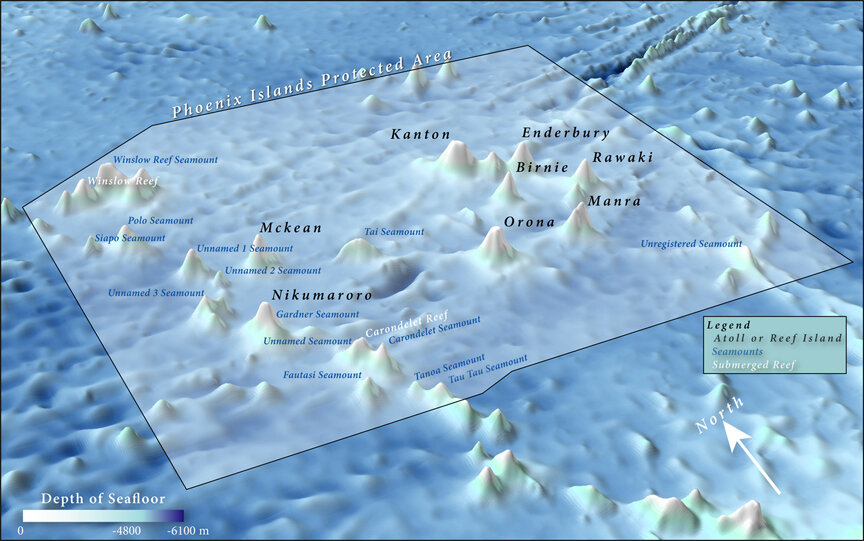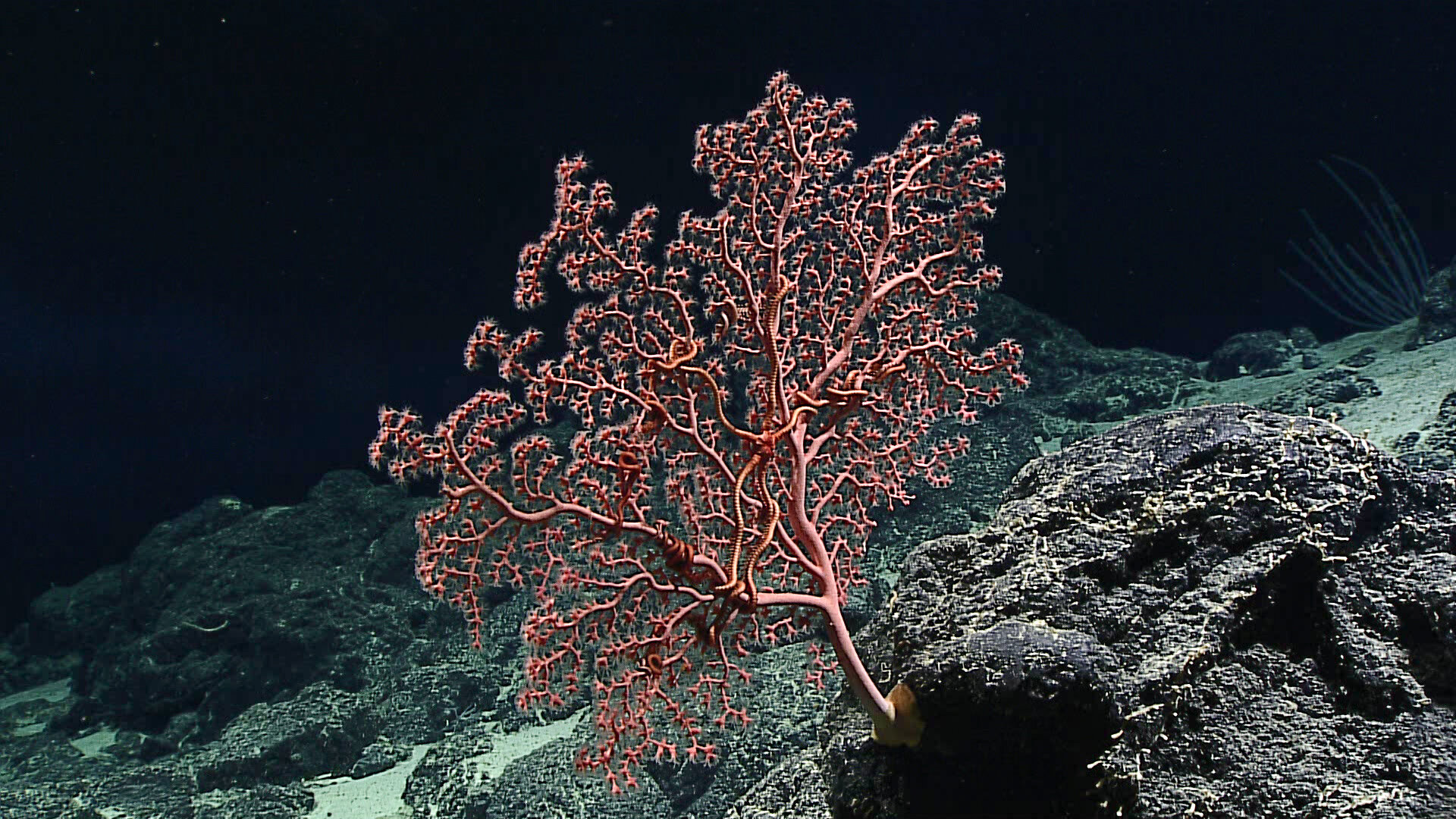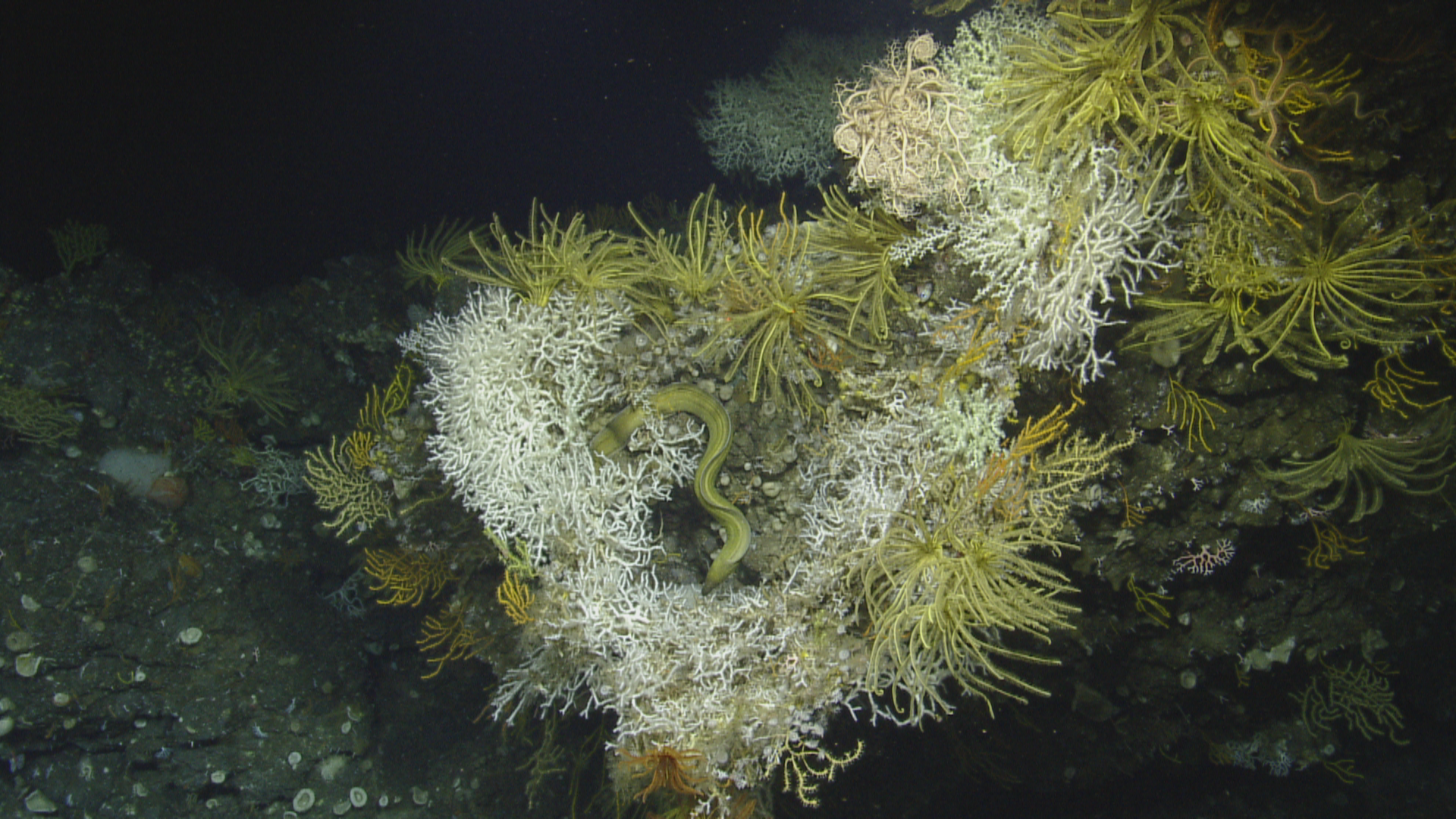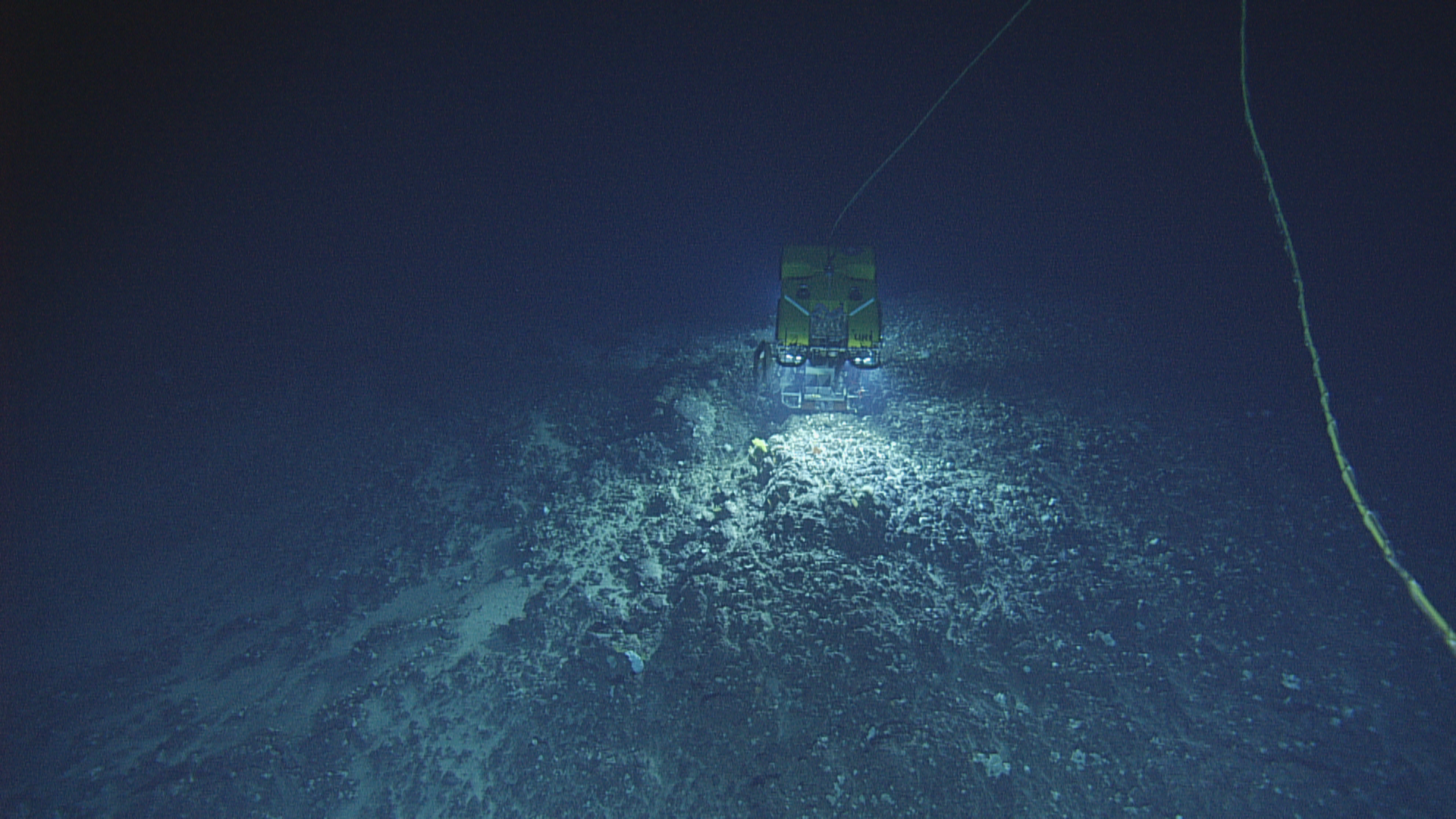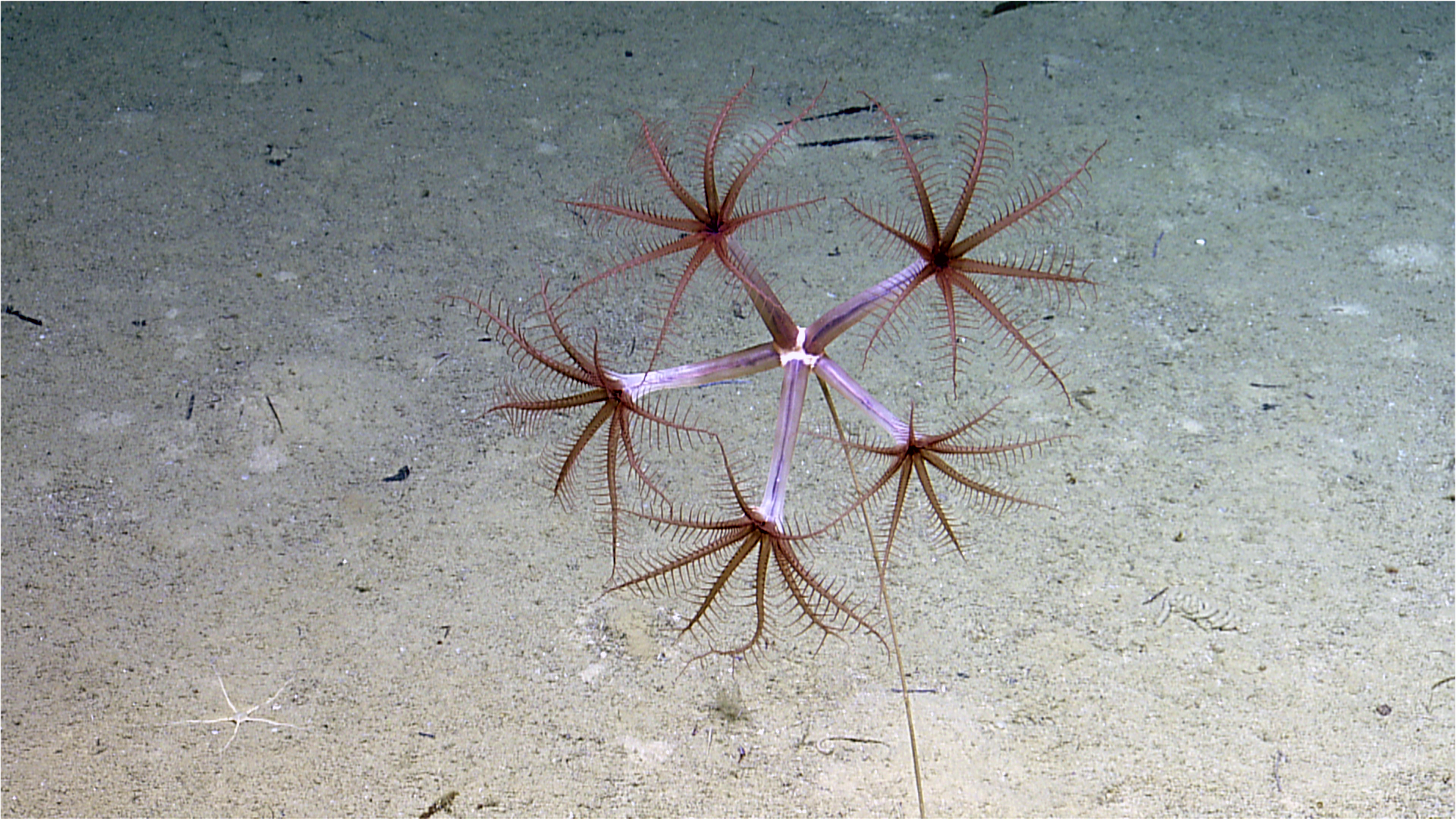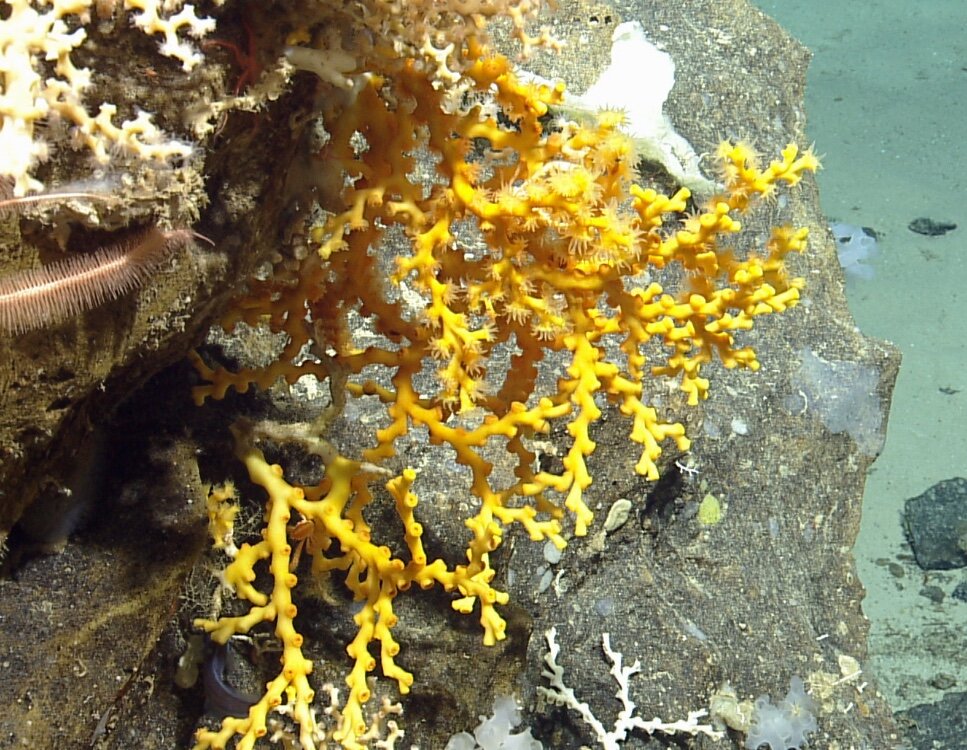Research
Image credits: Steve Auscavitch, Meredith Everett, Randi Rotjan
Steve Auscavitch's Full talk at the 8th International Symposium on Deep-sea Corals. May 29, 2023. Edinburgh, Scotland.
Exploring the biodiversity of central Pacific Ocean deep-sea coral communities with eDNA
Timeline: 2022-Present
Funded by NOAA Ocean Exploration, FY22
Role: Co-PI with Meredith Everett (NOAA-NWFSC)
Deep-sea corals and the animals that live among them are an important component of community biodiversity in the deep-sea worldwide. Despite the growing interest in resource development in the deep ocean, there has been little research on the impacts it may have on deep-sea benthic communities. And, since they’re difficult to access, they’re difficult to study. Our research team will use environmental DNA (eDNA) and voucher specimens collected from deep waters around remote islands and seamounts in the Pacific to improve our understanding of the biodiversity and biogeographic boundaries of deep-sea coral communities in the remote tropical region of the Pacific. Our work will involve identifying deep-sea coral species from museum voucher specimens, developing an eDNA reference database using these materials, and using this database to analyze eDNA samples collected in deep-sea coral communities across the region. This work will provide protocols and baseline data, which will facilitate further exploration and research and inform management of marine protected areas in the region.
Auscavitch, S. Constructing deep-sea coral genetic reference libraries for eDNA exploration of the benthos. Invited webinar. Crustal Ocean Biosphere Research Accelerator. September 3, 2024.
Auscavitch, S., Everett, M., Cordes, E., Rotjan, R. A genetic reference library for the central Pacific Ocean deep-water Octocorallia and application in eDNA characterization of the benthos. 8th International Symposium on Deep Sea Corals. Edinburgh, Scotland. May 29, 2023. Full talk.
Discovering Deep-sea Coral Diversity of the Phoenix Islands
Timeline: 2021-Present
June 2021 saw the return of the R/V Falkor to the Phoenix Archipelago in the equatorial central Pacific in search of a deeper characterization of deep-water corals and sponges encountered during the 2017 expedition to the Phoenix Islands Protected Area. During this expedition, the science party focused on exploring and sampling deep-water coral communities north of the equator, complementing efforts from other recent cruises in 2017 and 2019. The goals of my research are to better understand the evolutionary diversity of the Octocorallia (soft corals, sea fans, and sea pens) on seamounts in this region of the Pacific. Additionally, we greatly expanded environmental DNA (eDNA) sampling in the Howland and Baker Islands unit of the Pacific Remote Islands Marine National Monument to better apply this emergent characterization tool to seamount environments in the Pacific Ocean.
Catch up on major findings of the expedition here at Schmidt Ocean Institute’s cruise page.
Photo credits: Schmidt Ocean Institute
Illumining benthic and pelagic biodiversity in deep waters of Puerto Rico
Timeline: 2021-2022
Funded by NOAA Ocean Exploration, FY21. Role: Collaborator
Alongside existing museum vouchers, collections of deep-water corals from NOAA Ship Nancy Foster cruise NF22-02, Okeanos Explorer cruise EX18-11, and multiple previous expeditions by the E/V Nautilus will be used to better describe the diversity of benthic fauna in the region and how the octocoral fauna in the region are related to broader Atlantic biogeography.
More on this collaborative research can be found at: https://oceanexplorer.noaa.gov/explorations/22puerto-rico-deepwaters/welcome.html
Photo credits: NOAA Ocean Exploration, A. Quattrini
How do oxygen minimum zones (OMZs) influence diversity and community structure of deep-water corals?
Timeline: 2019-Present
In January 2019, I was part of a team conducting deep-water surveys in the eastern Pacific off Cocos Island, Costa Rica onboard Schmidt Ocean Institute’s R/V Falkor. The goal of some of these dives was to better understand how hypoxic and anoxic seawater influences life on the deep seamount benthos. I am currently investigating how OMZs and oxygen limited zones influence the coral life found on the seafloor on seamounts off Costa Rica using video surveys and phylogenetic methods. To date, we have identified 75 different morphospecies of corals occurring in and around the OMZ and massive changes to coral community structure at the interfaces of these oceanographic features.
An overview of this expedition can be found on the Schmidt Ocean Institute website.
Auscavitch, S.R., Deere, M., Cortes, J., Cordes, E.E., Oxygen Minimum Zones Drive Changes in Deep-sea Coral Species Distribution, Diversity, and Community Structure in the Eastern Tropical Pacific off Costa Rica.
Auscavitch, S. R. (2020). Deep-Sea Coral Biogeography and Community Structure in Tropical Seamount Environments. Temple University.
Photo credits: Schmidt Ocean Institute and S. Auscavitch
What is being protected in the Phoenix Islands Protected Area?
Timeline: 2017-2020
Deep-sea ecosystems from the equatorial central Pacific remain critically under-characterized with respect to their biodiversity. Meanwhile, while the threats from deep-sea mining, marine debris, and climate change are an ever-growing reality. The Phoenix Islands Protected Area is a model for large marine protected area (MPA) development and maintenance, but baseline records of the protected biodiversity in the largest environment, the deep sea, are lacking. Until recently, limited surveys have been conducted below 50 m, leaving most bathyal and abyssal depths completely unexplored. Oceanographic expeditions to the region in 2017 on the R/V Falkor and NOAA Ship Okeanos Explorer were the first to shed light on the distribution of deep-water biodiversity. My research here aims to characterize patterns of deep-sea coral biodiversity across seamounts and other deep-sea features. These baseline studies will help to guide the management of both large MPAs and the high seas, the latter of which contains substantial areas of vulnerable deep ocean.
Auscavitch SR, Deere MC, Keller AG, Rotjan RD, Timothy M, Cordes EE. 2020. Oceanographic drivers of deep-sea coral species distribution and community assembly on seamounts, islands, atolls, and reefs within the Phoenix Islands Protected Area. Frontiers in Marine Science 7:1–15. DOI: 10.3389/fmars.2020.00042.
Kennedy BRC, Cantwell K, Malik M, Kelley C, Potter J, Elliott K, Lobecker E, Gray LM, Sowers D, White MP, France SC, Auscavitch S, Mah C, Moriwake V, Bingo SRD, Putts M, Rotjan RD. 2019. The Unknown and the Unexplored: Insights Into the Pacific Deep-Sea Following NOAA CAPSTONE Expeditions. Frontiers in Marine Science 6:480. DOI: https://doi.org/10.3389/fmars.2019.00480.
Photo credits: NOAA OER and Schmidt Ocean Institute
Exploring Deep Caribbean Seamounts in the Anegada Passage
Timeline: 2014-2020
Seamount ecosystems in the Caribbean Basin remain largely unexplored. Punctuated by multiple high profile seamounts and submarine ridges, the Anegada Passage is one of the deepest throughways of North Atlantic water into the Caribbean Basin. Aboard the E/V Nautilus in 2014, we conducted detailed video surveys of seafloor communities and collected of representative deep-sea coral specimens from 200 to 1700 m depth on Dog, Conrad and Noroit Seamounts. We identified strong changes in coral communities across depth, typically associated with deep-sea water mass boundaries. These data are valuable baseline records for understanding the diversity of the deep Caribbean Sea.
Auscavitch SR, Lunden JJ, Barkman A, Quattrini AM, Demopoulos AWJ, Cordes EE. 2020. Distribution of deep-water scleractinian and stylasterid corals across abiotic environmental gradients on three seamounts in the Anegada Passage. PeerJ 8:e9523 DOI: 10.7717/peerj.9523
Auscavitch, S. R. (2020). Deep-Sea Coral Biogeography and Community Structure in Tropical Seamount Environments. Temple University.
Photo credits: Ocean Exploration Trust
Where I work…
The deep-sea is the largest environment on Earth. As scientists, we are just beginning to peel back veil on some of the secrets that the ocean hides. In the map below, you can take a look at the deep and shallow-water projects I have worked on and some of the places I’ve conducted research in the past.
